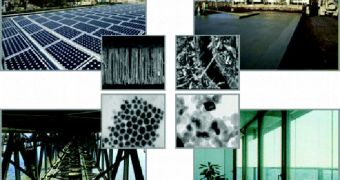At first glance, introducing nanotechnology into the field of designing and building construction materials may seem like a good idea. Nanoparticles can be used to create self-healing concrete, self-washing windows, as well as a host of other “smart” materials, which are bound to make the lives of construction workers and building administrators a lot easier. But, once discarded, these materials become potent source of uncontrollable particles, which may pose a health risk to the population living close to the area where they were dumped.
These are the results of a new study published in the July issue of the esteemed scientific journal ACS Nano, by a team of experts at the Rice University. The engineers say that analyzing this aspect is a very complex task, and one that has to keep in mind social, economic and political factors. But the potential environmental and health risks that nanomaterials pose should not be swept under the rug, they say. “The advantages of using nanomaterials in construction are enormous,” agrees the chair of the Department of Civil and Environmental Engineering at Rice, Pedro Alvarez.
“When you consider that 41 percent of all energy use in the US is consumed by commercial and residential buildings, the potential benefits of energy-saving materials alone are vast. But there are reasonable concerns about unintended consequences as well. The time for responsible lifecycle engineering of man-made nanomaterials in the construction industry is now, before they are introduced in environmentally relevant concentrations,” explains Alvarez, who is also the Rice George R. Brown professor, and a coauthor of the investigation.
Nanoparticles are heralded as the materials that will innovate the biomedical and electronics industries. But the third industry they will change is that of constructions. As such, a lot of attention needs to go into how things will change after these materials are introduced into the fold. “There are ways to engineer materials in advance to make them environmentally benign. There are also methods that allow us to consider the entire lifecycle of a product and to ensure that it can be recycled or reused rather than thrown away. The key is to understand the specific risks and implications of the product before it it is widely used,” Alvarez believes.

 14 DAY TRIAL //
14 DAY TRIAL //